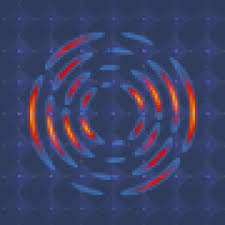
Breaking News
Living a Creative Life Maximizes Your Life
SEMI-NEWS/SEMI-SATIRE: November 9, 2025 Edition
 Trump pardons Mets legend, 'Celebrity Apprentice' alum Darryl Strawberry over tax evasion co
Trump pardons Mets legend, 'Celebrity Apprentice' alum Darryl Strawberry over tax evasion co
 You WON'T BELIEVE How Much Money We're REALLY Sending To Israel!
You WON'T BELIEVE How Much Money We're REALLY Sending To Israel!
Top Tech News
 HUGE 32kWh LiFePO4 DIY Battery w/ 628Ah Cells! 90 Minute Build
HUGE 32kWh LiFePO4 DIY Battery w/ 628Ah Cells! 90 Minute Build
 What Has Bitcoin Become 17 Years After Satoshi Nakamoto Published The Whitepaper?
What Has Bitcoin Become 17 Years After Satoshi Nakamoto Published The Whitepaper?
 Japan just injected artificial blood into a human. No blood type needed. No refrigeration.
Japan just injected artificial blood into a human. No blood type needed. No refrigeration.
 The 6 Best LLM Tools To Run Models Locally
The 6 Best LLM Tools To Run Models Locally
 Testing My First Sodium-Ion Solar Battery
Testing My First Sodium-Ion Solar Battery
 A man once paralyzed from the waist down now stands on his own, not with machines or wires,...
A man once paralyzed from the waist down now stands on his own, not with machines or wires,...
 Review: Thumb-sized thermal camera turns your phone into a smart tool
Review: Thumb-sized thermal camera turns your phone into a smart tool
 Army To Bring Nuclear Microreactors To Its Bases By 2028
Army To Bring Nuclear Microreactors To Its Bases By 2028
 Nissan Says It's On Track For Solid-State Batteries That Double EV Range By 2028
Nissan Says It's On Track For Solid-State Batteries That Double EV Range By 2028
Researchers at Japan Tokai University found a room temperature Superconductor ---

Researchers at Tokai University have created materials obtained by bringing n-alkanes into contact with graphite which are capable of conducting electricity with almost no energy loss at room temperature. They report that the sudden jump in resistance showing a phase transition is observed in the materials during heating by two-probe resistance measurement. The measured critical temperatures of the materials consisting of pitch-based graphite fibers and n-alkanes having 7-16 carbon atoms range from 363.08 to 504.24 K (231 Celsius) and the transition widths range between 0.15 and 3.01 K. They also demonstrate that superconductors with critical temperatures beyond 504 K (231 Celsius) are obtained by alkanes with 16 or more carbon atoms.
In 1986, a cuprate superconductor (Ba-La-Cu-O system) having a critical temperature which goes over the BCS limit (~30 K) was discovered and then a cuprate superconductor (Y-Ba-Cu-O system) with a critical temperature higher than 77 K was discovered. Furthermore, a Hg-based cuprate with a critical temperature of 133 K was found. The 133 K is still the highest critical temperature of conventional superconductors under atmospheric pressure

 Carbon based computers that run on iron
Carbon based computers that run on iron

